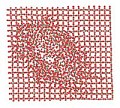 Over on Alex King’s blog, they’re offering suggestions for his workout playlist. Dozens of comments have rolled in with music ranging from Eye of the Tiger to Linkin Park to Pussycat Dolls and everything in between.
Over on Alex King’s blog, they’re offering suggestions for his workout playlist. Dozens of comments have rolled in with music ranging from Eye of the Tiger to Linkin Park to Pussycat Dolls and everything in between.
One suggestion I don’t think I saw in the comments was simply not to listen to music at all while working out, or watch TV screens, or read or do anything else distracting, but simply to do your workout.
There has been a lot of sports science research done to suggest that distractions while working out inherently lower the intensity and so efficacy of exercise, even though they might help you keep going or feel like you’re punching harder or whatever. e.g. J Sports Med Phys Fitness. 2006 Sep;46(3):425-30.
In that paper, the researchers conclude that “music evokes a ”distraction effect” during low intensity exercise”. They suggest that when jogging or walking at comparatively low exercise intensity, “listening to a favorite piece of music might decrease the influence of stress caused by fatigue” but that it does not affect the autonomic nervous system. As such, music can increase the ”comfort” level of performing the exercise and allow you to keep going longer (or until you’re bored with the music).
However, in my trawl for the original paper I wanted to cite, I found some very recent research in the journal Ergonomics that suggests the exact opposite of my claim that no music is good for your workout (Ergonomics. 2006 Dec 15;49(15):1597-610). In this paper, the researchers attempted to assess the effects of loudness and tempo on peoples’ workout intensity. They found that “Significant effects and interactions were found for running speed and heart rate across the different music tempo and loudness levels.” But more critically from the point of view of disproving my hypothesis, they found that a “More positive affect was observed during the music condition in comparison to the ‘no music’ condition.” So, I guess I’m wrong. That said, the latter study only had 30 volunteers so whether that’s truly statistically significant or enough to prove anything I cannot say.
It’s a complicated issue that might take a little more research to come down on one side or the other. Personally, I don’t mind a bit of talk radio in the background when I’m at the gym, but the young persons’ music that’s often playing I cannot abide, puts me right off my stride. Now, a bit of Zeppelin or Floyd would be a different matter.
As with most things in life though, there’s probably a balance point that you need to find to get the best out of your workout. So, keep taking those mp3 players to the gym. But, make sure you’ve got Wish You Were Here or Led Zep II on there.
 Fed up with using up so many batteries? Rechargeables giving you poor mileage? Then why not try a couple of sweet potatoes instead.
Fed up with using up so many batteries? Rechargeables giving you poor mileage? Then why not try a couple of sweet potatoes instead. Swiss chemists have devised a new approach to the familiar analytical technique of Raman spectroscopy that allows them to investigate the structure of individual molecules.
Swiss chemists have devised a new approach to the familiar analytical technique of Raman spectroscopy that allows them to investigate the structure of individual molecules. Advocates of nuclear power point to recent advances in waste storage materials that could allow the radioactive byproducts of the nuclear industry to be stored safely and indefinitely in ceramics rather than glass. Whereas those not in favour of splitting atoms to produce almost limitless energy point out that even vitrified nuclear waste will represent an ongoing problem for thousands of years.
Advocates of nuclear power point to recent advances in waste storage materials that could allow the radioactive byproducts of the nuclear industry to be stored safely and indefinitely in ceramics rather than glass. Whereas those not in favour of splitting atoms to produce almost limitless energy point out that even vitrified nuclear waste will represent an ongoing problem for thousands of years. Scientific stereotypes continue to persist, stretching even as far as recent Google acquisition, Youtube, the social video upload site. (Right click and view image to read it full size).
Scientific stereotypes continue to persist, stretching even as far as recent Google acquisition, Youtube, the social video upload site. (Right click and view image to read it full size). In 1919, long before antibiotics were commonplace and long before the notion of drug resistance had emerged, a doctor in the east European state of what is now Georgia, Felix d’Herelle, gave a patient suffering from severe dysentery a seemingly lethal concoction of viruses. You might think such a drink would kill the patient, but these were no ordinary viruses, they were bacteriophages, the nemesis of bacteria.
In 1919, long before antibiotics were commonplace and long before the notion of drug resistance had emerged, a doctor in the east European state of what is now Georgia, Felix d’Herelle, gave a patient suffering from severe dysentery a seemingly lethal concoction of viruses. You might think such a drink would kill the patient, but these were no ordinary viruses, they were bacteriophages, the nemesis of bacteria.